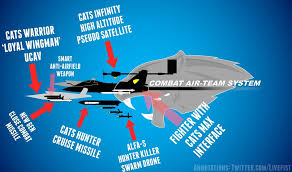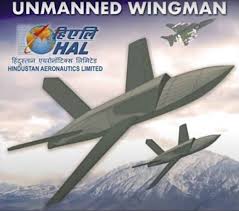My Article was Published on The EurasianTimes Website on 01 April 25.
The Indian Air Force (IAF) has steadily emerged as a formidable player in the global defence landscape, showcasing its capabilities through participation in multinational exercises worldwide. The Iniochos exercise, hosted annually by Greece’s Hellenic Air Force (HAF), is a prestigious and tactically significant event. The IAF’s involvement in this exercise, particularly in editions such as Iniochos-23 and the upcoming Iniochos-25, underscores India’s growing commitment to enhancing interoperability, refining combat skills, and strengthening military ties with friendly nations.
IAF in Iniochos – 25
The Indian Air Force (IAF) is participating in Exercise INIOCHOS-25, a prestigious multinational air exercise hosted by the Hellenic Air Force. The exercise is taking place at Andravida Air Base in Greece from March 31 to April 11, 2025. The IAF has deployed a contingent that includes Su-30 MKI fighter jets, IL-78 mid-air refuelers, and C-17 Globemaster transport aircraft.
INIOCHOS is a biennial event designed to enhance tactical skills, foster interoperability, and strengthen military ties among participating air forces. This year’s exercise involves air and surface assets from fifteen countries, simulating realistic combat scenarios that reflect modern air warfare challenges. Participating nations in INIOCHOS-25 include France, Israel, Italy, Montenegro, Poland, Qatar, Slovenia, Spain, the United Arab Emirates, the United States, Cyprus, Bahrain, and Slovakia.
The exercise encompasses various operations such as Offensive counter air Operations, Defensive counter air Operations, Strategic Air Operations, Air Power Contribution to Counter-Land and maritime operations, Reconnaissance Missions, Combat Search and Rescue, Time-Sensitive Targeting, and protection of High-Value Airborne Assets.
The IAF’s participation aims to provide an opportunity to train in planning and executing combined air operations in complex air warfare scenarios and gain insights into operational best practices. It also aims to improve operational readiness, refine tactics and enhance international cooperation, synergy, and interoperability with other participating air forces. This engagement underscores India’s commitment to global defence collaboration and its focus on operational excellence through joint operations with friendly countries.
The Iniochos Exercise: An Overview.
Exercise Iniochos, named after the ancient Greek term for “charioteer” or “rein-holder,” is an annual multinational air exercise conducted by the Hellenic Air Force. Originating in the late 1980s as a small-scale tactical drill, it has evolved into one of Europe’s most competitive and realistic air combat training platforms. Based on the “Single Base Concept,” the exercise operates entirely from the Andravida Air Base in northwestern Peloponnese, Greece, offering a unique operational environment that simulates modern air warfare challenges. The exercise integrates a variety of air and surface assets, creating complex scenarios that test participating forces in multi-dimensional combat operations.
Iniochos enhances international cooperation, synergy, and interoperability among participating air forces. It features realistic combat scenarios involving air superiority missions, anti-surface warfare, combat search and rescue, and operations against integrated air defence systems. The exercise’s dynamic nature and high-tempo rhythm provide a rigorous training ground for air forces to refine tactics, exchange operational knowledge, and build professional relationships. Over the years, it has attracted participants from NATO and non-NATO countries alike, including the United States, France, Italy, Israel, Saudi Arabia, and, more recently, India.
The IAF’s Entry into Iniochos.
The Indian Air Force first participated in Exercise Iniochos in 2023 (Iniochos-23), marking a significant milestone in its engagement with European air forces. This debut followed a series of overseas exercises that year, including Exercise Desert Flag in the UAE, Exercise Cobra Warrior in the UK, and Exercise Orion in France. The IAF’s participation in Iniochos-23, held from April 24 to May 4, 2023, at Andravida Air Base, involved a contingent of four Sukhoi Su-30 MKI multirole fighters and two C-17 Globemaster III strategic transport aircraft. This deployment showcased the IAF’s ability to project power over long distances and operate seamlessly in a multinational framework.
During Iniochos-23, the IAF contingent operated alongside aircraft such as French Rafales, U.S. F-16s, Italian Tornados, and Greek F-4Es and Mirage 2000s. The exercise involved a mix of air-to-air and air-to-ground missions, with participants facing simulated threats from surface-based air defences and adversary aircraft. The IAF’s Su-30 MKIs played a key role in offensive and defensive operations, leveraging their agility and firepower to contribute to mission success. The professional interactions facilitated by the exercise allowed IAF pilots and ground crews to share best practices with their counterparts, gaining insights into NATO-standard tactics and procedures.
Operational Contributions of the IAF
The IAF brings a unique blend of capabilities and experience to the Iniochos exercise, enhancing its value for all participants. The Sukhoi Su-30 MKI, a twinjet multirole fighter developed by Russia and license-built by India’s Hindustan Aeronautics Limited (HAL), is a cornerstone of the IAF’s contribution. With its advanced avionics, long-range radar, and ability to carry a diverse array of weapons, including air-to-air and air-to-ground munitions, the Su-30 MKI is well-suited for the complex scenarios of Iniochos. Its versatility allows the IAF to engage in air superiority missions, strike operations, and coordinated manoeuvres with other aircraft types.
Including C-17 Globemaster III aircraft in Iniochos-23 and Iniochos-25 demonstrates the IAF’s logistical prowess. Capable of transporting troops, equipment, and supplies over vast distances, the C-17 ensures that the IAF contingent remains self-sufficient during the exercise. In Iniochos-25, adding IL-78 refuellers further enhances operational flexibility, enabling extended missions and mid-air refuelling for the Su-30 MKIs. This capability is particularly valuable in simulating long-range strike operations and sustaining high-intensity combat scenarios, aligning with the exercise’s focus on realism.
Objectives and Benefits for the IAF
The IAF’s participation in Iniochos serves multiple strategic and operational objectives. The exercise enhances the IAF’s combat readiness by exposing its personnel to realistic, high-threat scenarios. The Hellenic Air Force’s use of advanced debriefing tools, such as GPS trackers, Link 16 data, and shot assessment software, provides detailed feedback on mission performance. This allows IAF pilots to refine their tactics, improve decision-making under pressure, and align their skills with international standards.
Interoperability is another key benefit. Operating alongside air forces with diverse equipment and doctrines—from U.S. F-15s and MQ-9 drones to French Rafales and Saudi F-15s—challenges the IAF to effectively integrate its platforms and procedures. This experience is invaluable for joint operations in potential future coalitions, whether in peacekeeping missions, disaster response, or regional security contingencies. The IAF’s exposure to NATO-aligned forces also bridges the gap between Eastern and Western military practices, enhancing its versatility.
Professionally, Iniochos fosters camaraderie and mutual learning. The exercise’s intensive schedule, which often spans from pre-dawn briefings to late-night debriefs, creates opportunities for IAF personnel to engage with their counterparts from Greece, the U.S., France, and other nations. These interactions provide insights into operational best practices, maintenance techniques, and mission planning strategies, enriching the IAF’s institutional knowledge.
Strategically, the IAF’s participation signals India’s commitment to global defence cooperation. India strengthens its military diplomacy by engaging in exercises like Iniochos and building trust and goodwill with Greece and other participating nations. This aligns with India’s broader foreign policy goals of fostering partnerships in the Mediterranean and European regions, complementing its traditional focus on the Indo-Pacific.
Broader Implications for India’s Defence Strategy
The IAF’s involvement in Iniochos reflects a broader shift in India’s defence strategy toward greater international engagement and operational excellence. Historically focused on regional security challenges, particularly along its borders with Pakistan and China, the IAF has increasingly sought to project power and build capabilities for global operations. Exercises like Iniochos, conducted thousands of kilometers from Indian soil, demonstrate the IAF’s ability to deploy and sustain forces overseas—a critical capability in an era of expanding geopolitical interests.
This participation also enhances India’s strategic partnerships. As a NATO member with a strategic location in the Mediterranean, Greece offers India a valuable ally in countering shared challenges such as terrorism, maritime security threats, and regional instability. The IAF’s presence in Iniochos strengthens bilateral defence ties, paving the way for potential collaborations in training, technology exchange, and joint exercises beyond the annual event.
Moreover, the IAF’s experience in Iniochos contributes to its modernisation efforts. Exposure to advanced aircraft, such as the French Rafale (which the IAF also operates) and U.S. F-15s, provides a benchmark for evaluating its platforms and tactics. Lessons learned from the exercise can inform the IAF’s ongoing acquisition programs, including integrating new fighters, unmanned systems, and network-centric warfare capabilities.
Conclusion
The Indian Air Force’s participation in the Iniochos exercise marks a significant chapter in its journey toward becoming a globally respected air power. Through its deployments in Iniochos-23 and the upcoming Iniochos-25, the IAF demonstrates its operational prowess, logistical reach, and commitment to international cooperation. The exercise hones the IAF’s combat skills and reinforces India’s strategic partnerships, aligning with its vision of a secure and interconnected world. As the IAF continues to soar in foreign skies, its role in exercises like Iniochos will remain a testament to its evolving capabilities and enduring resolve.
Please Do Comment.
Link to the article on the website:-
For regular updates, please register your email here:-
References and credits
To all the online sites and channels.
Pics Courtesy: Internet
Disclaimer:
Information and data included in the blog are for educational & non-commercial purposes only and have been carefully adapted, excerpted, or edited from reliable and accurate sources. All copyrighted material belongs to respective owners and is provided only for wider dissemination.
References:-
- “Indian Air Force To Display Skills In Multinational Exercise In Greece”. NDTV, March 30, 2025.
- “Indian Air Force to Participate in INIOCHOS-25: A Multi-Nation Air Exercise”. Adda247, March 31, 2025.
- “IAF To Participate In Multi-Nation Iniochos Exercise On March 31”. StratNews Global, March 31, 2025.
- “Indian Air Force’s Su-30 MKI fighters, IL-78 & C-17 aircraft in Greece for 15-nation war drill INIOCHOS-25”. The Week, March 31, 2025.
- “IAF to participate in multinational air exercise in Greece”. The Statesman, March 30, 2025.
- “Indian Air Force to participate in multi-nation air exercise INIOCHOS 25”. Ministry of Defence, Government of India, March 30, 2025.




